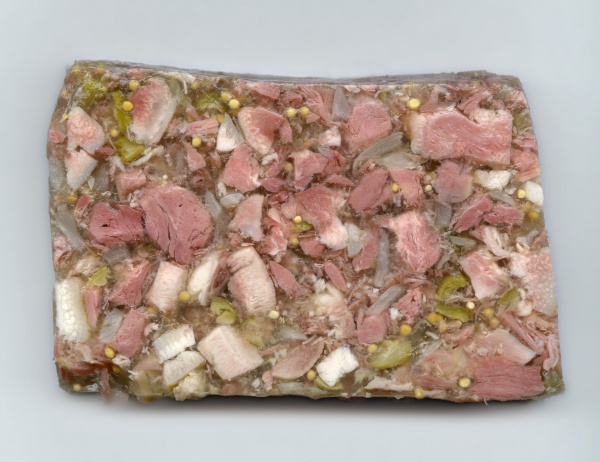Facts About Head cheese
Head cheese, also known as brawn, is a distinctive cold cut rooted in European culinary tradition. Contrary to its name, it is not a dairy product but rather a terrine or meat jelly. It is typically made from the meat of a calf, pig, sheep, or cow, all encased in a gelatinous aspic. While organ parts such as the brain, eyes, and ears are usually excluded, the tongue, feet, and heart are often included. Occasionally, it is prepared using pork and veal trimmings with added gelatin to aid in setting. This preparation is typically served cold or at room temperature.
The origins of head cheese date back to the Middle Ages, when it was a method to utilize every part of an animal, especially the head. The cleaned head would be simmered to produce a rich stock that naturally gels due to the gelatin in the skull. Sometimes, additional gelatin or further reduction of the stock would be employed to ensure proper setting.
The nomenclature for head cheese varies by region. In North America, it is known as head cheese. In Scotland, it is referred to as potted heid, and in Australia, it is called brawn. When pickled, it is sometimes known as souse in North America.
Globally, head cheese appears under various names and in numerous variations, with each region imparting its unique touch. Countries across Europe, Africa, Asia, Australia, the Caribbean, Latin America, and North America all have their distinct recipes and seasonings. In many regions, head cheese is considered a traditional dish or even a delicacy.

 Norway
Norway